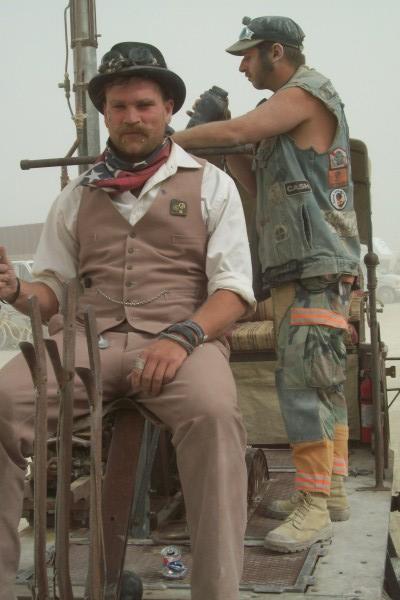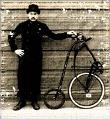Church was held nearby in the local school. They build a cement-block building low and long like a chickenhouse, and make the ends solid and put a tin roof on it. Then they just section it off and give each section low walls, so each room is breezy and open. The walls are red dirt plaster with 50 years of hand smudges. These buildings formed an L around a field spattered with fruit trees. On this particular Sunday each cell was occupied by a church, each trying to outdo each other with enthusiasm.
There were about 20 of us in the Charismatic church. We sat in the schoolkids' tilted, heavy desks. The pastor read and spoke about a section of scripture but the church next door had the pound-it-in type of preacher and he had a PA so I didn't catch much. Further down there was some drumming going on. After a while they started drumming and singing, the two pastors-in-training playing a long skinny drum and the kick drum from an old kit. Some women had tambourines. The beats were chunky and jungly, the singing loud and jubilant. We competed with the neighbors. One woman obviously loved the music, she was dancing up a storm. Every time I thought a song was over, it would get faster. At one point an ole dog wandered in and went to sleep at the front of one of the rows of desks. After a good half hour of singing the two pastors-in-training came forward to host the testimonial. One of them spoke Twi, one English. Some people testified. The woman who liked the music wanted to sing a song as her testimonial, so she did. Then they read some scripture but when they paused to find a quote the woman would break out in song, and they would politely let her finish. Then came the guest preacher. By this time I was hurtin'. My malaria was starting to come back and it seemed this service would never end. They started to drum again. The drum section was right behind my head, and my head was pounding as the room was swirling and the beats were heavy on that BOW beat, think vinyl pants and smoke machines and bowls of condoms. I staggered out. I ran far enough away that they couldn't hear my yarl and I retched as the half-dozen churches pounded away. Afterwards they came out for me with some water, prayed over me, and stuck me in a taxi.
---
If there's any industry after agriculture that dominates rural Ghanaian life, it's the funeral. Closely followed by textiles, to wear to the funerals. Every weekend there are six or so, everyone knows everyone so everyone attends each. They follow a strict pattern since every townsperson needs to get through each one quickly and efficiently since there could be eight that day or one a few hour's drive away that they have to catch.
Now, I've spoken of the wake I attended. Wakes serve a number of purposes, the original being to wake up the dead in case they ain't really dead. They are for mourning, for wailing, for celebrating a life well lived, and for sharing memories of the dead. These funerals (I hit three as long as I was done up for it) were more of a public recognition of the person's passing. There weren't any teary eyes or condolences given, not even any speeches.. They also seemed to be primarily for the adults, with a few sullen young folks either dressed in street clothes or bitterly crammed into funeral gear.
The gear: For women, flowing dresses with lots of bunched fabric plus Bouvier-ian piles of head wrap. For men: A single piece of rectangular, heavy cloth the size of a qeen-sized bedspread. You hold it across your shoulders like Batman, reach around to the back with your right hand so that the cloth curls under your armpit, and fling the right side over your left shoulder like a vampire turns into a bat, or better yet like a fruity ceasar storms out of senate. Then you dig your left hand out and, to close the gap on the left side, reach back and grab the cape section and bring it around to your belly button. Then you hold it there and don flat slippers that give you a slow, shuffling, dignified walk. Your right shoulder and nipple are exposed, but your legs are clad to the ankle. The old dudes could wear it hands-free but this wasn't an option for me- even the pros are constantly hitching this oversized toga back over the shoulder.
The patterns are as varied as usual in Africa but there's a color code: Black if you are in mourning. Red if you have been endangered by the death, usually meaning you are family and your elder relative and protector has died. White if you are family and the funeral is on a Sunday and you're going to church.
Three tents are arranged in a C in an open lot, several of which exist for this purpose. One for guests, one for family, one for the DJ. The DJ blasts music but it's constantly interrupted by someone announcing arrivals. The front line of the family section is the main gang, and you greet them from right to left. Down towards the end is the old-granny section and the handshakes start getting gnarled and bulbous. We're next, then you, the knuckles say.
Then you take a seat in the visitor section but not for long, as a representative of the family (most likely your best friend in the family) will come and take you to the family's house. You sit and someone brings drinks, and you all sit and look at the drinks. Then the representative comes and you thank them for the drinks and they open them up (they're beers and sodas) and you sit and sip while saying hello to the folks you know who are hanging out at the house. At this point you discuss with your party how much the group will donate to the family once you return to the funeral. I suspect group donations are done to blur the actual donation-per-capita, as this figure will be announced over the PA as soon as you give the cash to the representative, who puts the cash in a big box at the family side. There's a plate of rice, water, and herbs there to protect the money. Once your donation has been announced a big crowd from the family comes down the line to shake your group's hand, and the last one has a receipt with a picture of the deceased and a "The family of XXX thanks you generously for your kind contribution of ¢____________." After that it's expected that you probably have to hustle along to another funeral.
I repeated this process three times, the sitting and looking at the drinks and the receipt and everything.
 The Steampunk World
The Steampunk World


0 Comments:
Post a Comment
<< Home